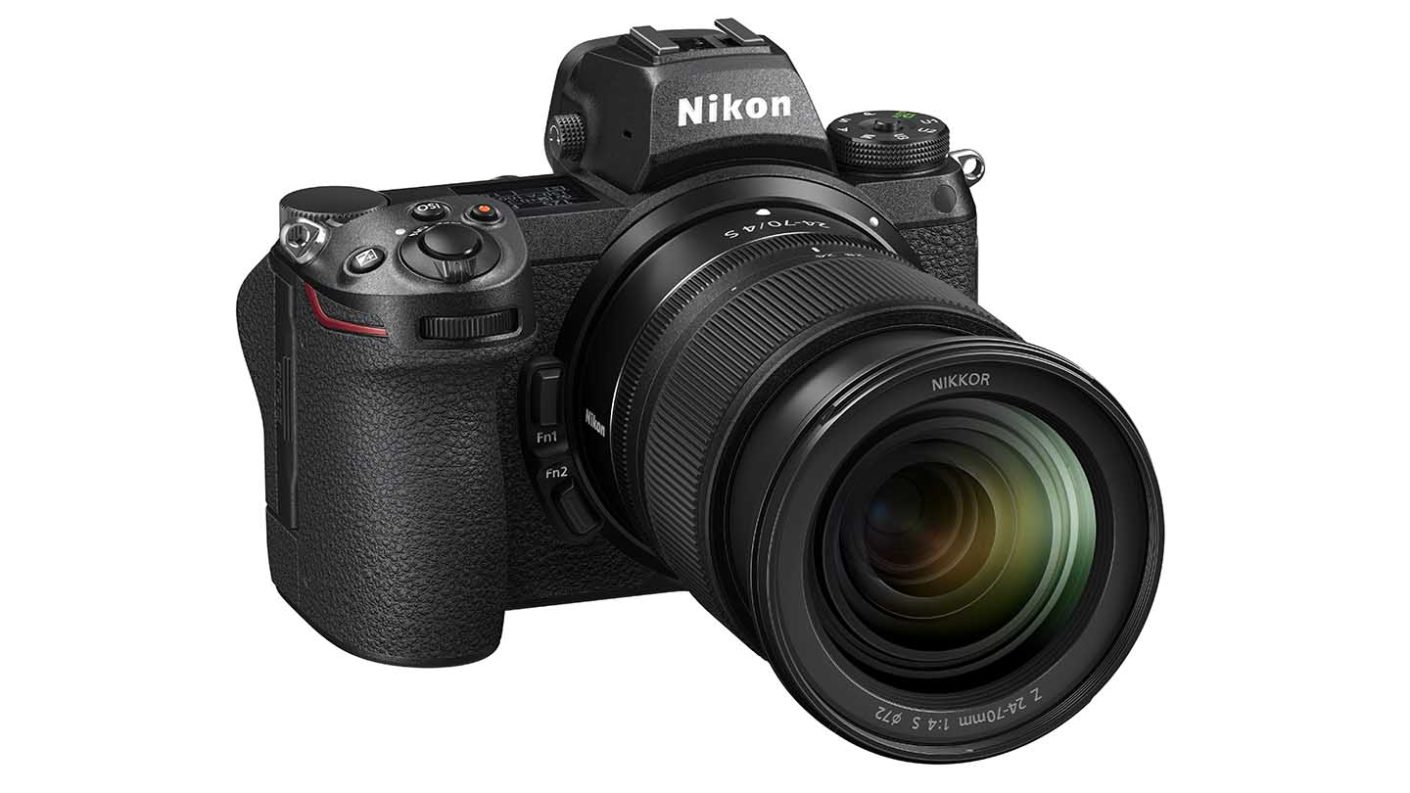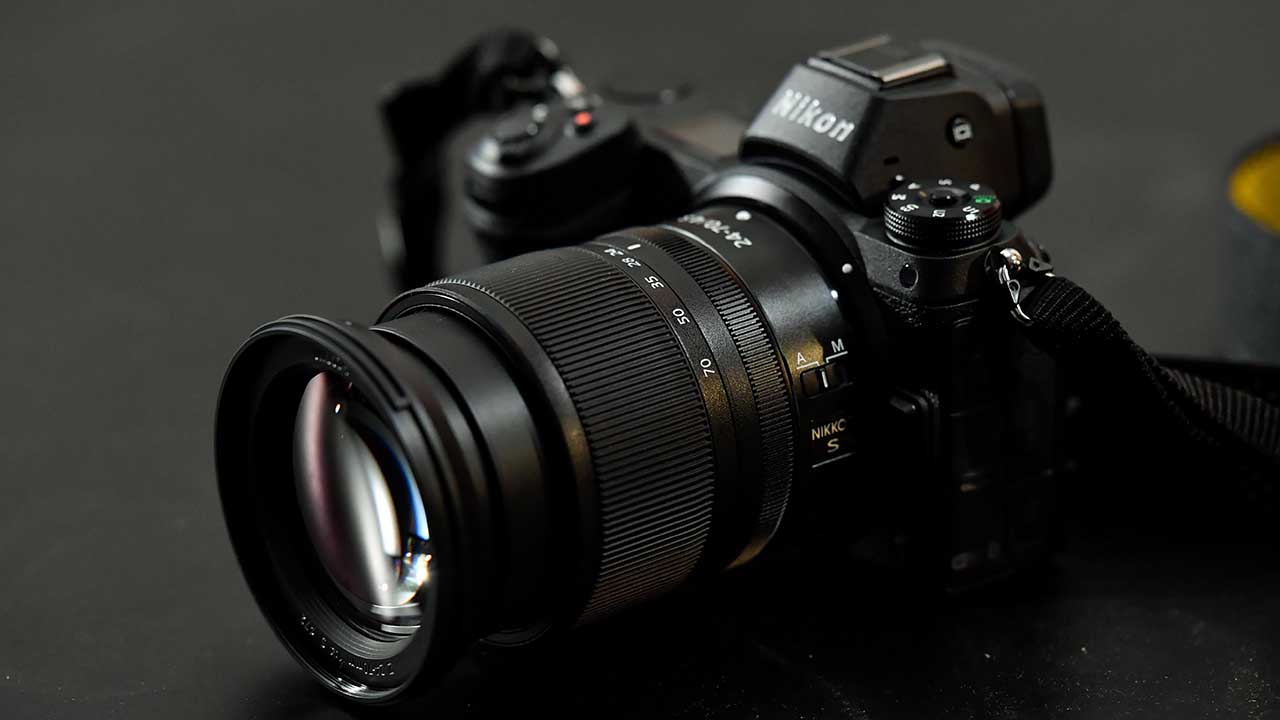Nikon introduced Eye AF technology – which it calls Eye-Detection AF – to its Z series range in May 2019 via a firmware update.
Firmware version 2.0 for the Nikon Z6 and Z7 added the new feature, which automatically detects and focuses on human eyes in the cameras’ auto-area AF mode. Then came firmware version 3.0 which added Animal-detection AF, which also looks for dog and cat eyes.
Eye-Detection AF works in both AF-S and AF-C focus modes, and in a group setting you can use the camera’s joystick to move across different people (or animals) – and eyes – within the crowd.
Here’s a good tutorial on how to use Nikon’s Eye-Detection AF. And here is a quick guide on how to update your Nikon Z6 or Z7 firmware.
For a deeper dive into the many different camera types and features available, check out our range of camera buying guides. So which Nikon cameras have Eye-Detection AF?
Nikon Z7 II

Specification
- Camera type: Full-frame mirrorless camera
- Announced: 14th October 2020
- Lens mount: Nikon Z
- Sensor: Full-frame (FX 35.9 x 23.9mm) 45.7MP backside illuminated (BSI) sensor
- Processing engine: Dual Expeed 6
- Stabilisation: 5-axis in-body VR
- Sensitivity: ISO 64-25,600, expandable to ISO 32-102,400
- Maximum continuous shooting rate: 10fps for up to 200Jpegs or 77 12-bit uncompressed raw files, 9fps with 14-bit raw files
- Autofocus system: Hybrid with phase and contrast detection
- Phase detection points: 493
- Video resolution: 4K (3840 x 2160) 60/50/30/25/24p, Full-HD (1920 x 1080) 120/100/60/50/30/25/24p, Slow-motion mode 1920 x 1080 30p x4/25p x4/24p
- Viewfinder: 0.5-inch 3.69-million-dot electronic viewfinder
- Screen: 3.2-inch 2,100,000-dot tilting touch-screen
- Storage: Dual slot 1 XQD/CFexpress and 1 SD/SDHC/SDXC
- Dimensions (W x H x D): 134 x 100.5 x 69.5mm / 5.3 x 4 x 2.8-inches
- Weight: 705g with battery and memory card but without body cap, 615g body only
The Nikon Z7 II has the same sensor as the original Z7 but there’s twice the processing power. It also comes with Eye-detection AF for humans and animals pre-installed, there’s not need for a firmware upgrade.
Also, thanks to that extra processing power, Eye-detection AF works in video as well as stills mode. That’s an exciting development that we’re only starting to see introduced.
£2999
€3442 / $2996.95For
- High-quality sensor
- Excellent user interface and control layout
- Weatherproof build
Nikon Z6 II
Specification
- Camera type: Full-frame mirrorless camera
- Announced: 14th October 2020
- Lens mount: Nikon Z
- Sensor: Full-frame (FX 35.9 x 23.9mm) 24.5MP backside illuminated (BSI) sensor
- Processing engine: Dual Expeed 6
- Stabilisation: 5-axis in-body VR
- Sensitivity: ISO 100-51,200, expandable to ISO 50-204,800
- Maximum continuous shooting rate: 14fps for up to 200Jpegs or 124 12-bit uncompressed raw files
- Autofocus system: Hybrid with phase and contrast detection
- Phase detection points: 273
- Video resolution: 4K (3840 x 2160) 30/25/24p (60P to come with free firmware update in Feb 2021), Full-HD (1920 x 1080) 120/100/60/50/30/25/24p, Slow-motion mode 1920 x 1080 30p x4/25p x4/24p x5
- Viewfinder: 0.5-inch 3.69-million-dot electronic viewfinder
- Screen: 3.2-inch 2,100,000-dot tilting touch-screen
- Storage: Dual slot 1 XQD/CFexpress and 1 SD/SDHC/SDXC
- Dimensions (W x H x D): 134 x 100.5 x 69.5mm / 5.3 x 4 x 2.8-inches
- Weight: 705g with battery and memory card but without body cap, 615g body only
Introduced at the same time as the Z7 II and featuring the same 24Mp full-frame backside-illuminated CMOS sensor as is in the Z6, the Z6 II has dual Expeed 6 processing engines to make it a bit snappier. The big news for Eye-detection, however, is the same as with the Z7 II, it’s present straight from the box and it functions in video mode as well as stills.
£1999
€2262For
- High-quality sensor
- Excellent user interface and control layout
- Weatherproof build
Nikon Z6
Specification
- Camera type: Full-frame (FX) mirrorless
- Announced: 23rd August 2018
- Lens mount: Nikon Z
- Sensor: Full-frame (FX) 24.5Mp backside illuminated (BSI) sensor
- Autofocus system: Hybrid with phase and contrast detection
- Phase detection points: 273
- Viewfinder: 0.39-inch 2,360,000-dot OLED electronic viewfinder
- Screen: 3.2-inch 2,100,000-dot tilting touch-screen
- Dimensions (W x H x D): 134 x 100.5 x 67.5mm / 5.3 x 4 x 2.7-inches
- Weight: 675 g / 1 lb. 7.9 oz with battery and memory card but without body cap, 85 g/1 lb. 4.7 oz. camera body only
The v2.0 firmware update for Nikon Z6 and Z7 mirrorless cameras added Eye-Detection autofocus and AE (Auto Exposure) tracking in continuous high-speed (extended) mode, as well as extending the low-light detection range of the autofocus.
It’s the Eye-Detection autofocus that’s got Nikon enthusiasts excited though.
Nikon Z6 and Z7 firmware version 2.0’s Eye-Detection AF feature automatically detects and focuses on human eyes in the cameras’ auto-area AF mode (AF-S, AF-C) and focuses on them.
In a group setting, the Eye-Detection AF mode will lock on one person’s eye, and then you can use the multi-selector to switch between eyes and people. We’ve used it (here’s how to use Nikon’s Eye-Detection AF) and it’s brilliant.
You can get the Nikon Z6 from Wex Photo Video and Park Cameras in the UK, and from Adorama and B&H Photo Video in the US.
£2079
$1996.95For
- Superb quality images
- Excellent weather-sealing and build quality
- Growing range of very high-quality lenses
Nikon Z7

Specification
- Camera type: Full-frame mirrorless camera
- Sensor: Full-frame (FX) 45.7MP backside illuminated (BSI) sensor
- Lens mount: Nikon Z
- Autofocus system: Hybrid with phase and contrast detection
- Phase detection points: 493
- Storage: XQD/CFexpress
- Viewfinder: 0.5-inch 3.69-million-dot electronic viewfinder
- Screen: 3.2-inch 2,100,000-dot tilting touch-screen
- Dimensions (W x H x D): 134 x 100.5 x 67.5mm / 5.3 x 4 x 2.7-inches
- Weight: 675 g / 1 lb. 7.9 oz with battery and memory card but without body cap, 585g/1 lb. 4.7 oz. body only
Eye-detection autofocus, often referred to as Eye AF, is fast becoming a must-have feature. It works in a similar way to Face-detection-AF but of course, it homes in on a smaller target.
The big question everyone wants answering about Nikon Eye AF is does it work? Happily, the answer is yes, it does a pretty good job.
We wanted to see how a working photographer got on with it so we asked him to report back after using it.
Paul tested it in AF-C mode on his kids playing in the woods, as well as on posed-portraits in AF-S mode.
With a portrait subject quite large in the frame he found it locked on to the eye quickly and tracked accurately. Even when the subject turned a little side on, or was squinting in bright light, the focus box followed the eye well. However, the subject has to be quite close for it to find the eye.
When the subject is at around three-quarter length or further back, the Nikon Z7 usually finds the face, not the eye.
In the woods with the kids turning and dropping out of frame, it struggled a little more. Occasionally it locked onto something in the background and it was a little slow to reacquire focus when the subject can back into frame.
When it isn’t behaving you can quickly switch to normal tracking mode though. Paul found this pretty useful as it means you have a bit more control over what the camera is focusing on without having to come out of auto-area AF.
You can also switch between which eye the camera focuses on. When multiple eyes are detected, a yellow arrow appears at the side of the autofocus box. You can toggle between eyes using the camera’s joystick or D-Pad. With a single portrait this lets you select the left or right eye. With a group shots you can choose the best eye or person to focus on.
From what we’ve seen, we think that Eye-detection AF is a great additional feature for the Nikon Z series, and the Z6 and Z7 are among the best cameras with AF that you can currently buy.
You can get the Nikon Z7 from Wex Photo Video and Park Cameras in the UK, and from Adorama and B&H Photo Video in the US.
£2299
$3399.00For
- High-quality sensor
- Excellent user interface and control layout
- Weatherproof build
Nikon Z5
Specification
- Camera type: Full-frame (FX) mirrorless
- Announced: 21st July 2020
- Lens mount: Nikon Z
- Sensor: 24.3Mp full-frame CMOS
- Autofocus system: 273-point Hybrid (combines phase and contrast detection) with Eye AF for humans and animals
- Stabilisation: 5-axis in body
- Viewfinder: Electronic 0.39-inch 3,690,000-dot OLED
- Screen: 3.2-inch 1,040,000-dot tilting touch-screen
- Maximum video resolution: 4K (with 1.7x crop)
- Maximum continuous shooting rate: 4.5fps
- Storage: Dual SD/SDHC/SDXC UHS-II
- Connectivity : Wi-Fi, Bluetooth, SnapBridge
- Dimensions (W x H x D): 134 x 100.5 x 69.5mm (5.3 x 4.0 x 2.8inches)
- Weight: 590g/ 1 lb. 4.9 oz body only, 675g / 1 lb. 7.9 oz with battery and memory card but without body cap
Nikon introduced the 24Mp Z5 as an entry-level full-frame camera but its build and feature set offer a bit more than you might expect from that billing.
For example, it doesn’t have quite the same level of sealing as the Z6 and Z7 above it in the range, but it is still weather-proof. There are also two memory card ports that accept SD-type media and they are UHS-II compliant.
Nikon has also given the Z5 the same 0.39-inch 3,690,000-dot electronic viewfinder as is in the Z7 II, Z6 II, Z7 and Z6.
In addition, the hybrid autofocus system, which uses both phase and contrast detection has 273-user-selectable AF points and Eye-detection can be set to work with humans or animals (cats and dogs).
£1719
€1999 / $1397For
- Compact size and full-frame sensor
- Nikon Z mount
- Best in class viewfinder
Nikon Z50
Specification
- Camera type: Mirrorless
- Sensor: 20.88Mp APS-C / DX (23.5x15.7mm) CMOS
- Processing engine: Expeed 6
- Lens mount: Nikon Z mount
- Sensitivity range: ISO 100-51,200; expands to 204,800
- Viewfinder: 0.39-inch 2,360,000-dot OLED electronic viewfinder
- Screen: Tilting 3.2–inch 1,040,000-dot touchscreen
- Autofocus: Hybrid (phase and contrast detection) AF with 209 AF points, Eye AF and Subject Tracking. Firmware V.20 adds Eye-detection AF for Animals as well as humans
- Continuous Shooting: 11fps with continuous AF and exposure metering
- Video: 4K at 30fps and Full-HD at 120fps
- Storage: SD/SDHC/SDXC UHS-I
- Connectivity: Snapbridge 2.6; Wi-Fi, Bluetooth
- Dimensions (W x H x D): 126.5 x 93.5 x 60 mm / 5 x 3.7 x 2.4-inches
- Weight: 450g / 15.9oz with battery and memory card but without body cap, 395g /14oz body only
The Nikon Z6 and Z7 are great, but not all photographers want a full-frame camera. The Nikon Z50 offers that alternative for Nikon users wanting a mirrorless camera, and it has plenty to offer experienced photographers thanks to a solid build and a comprehensive feature set.
Its autofocus system is excellent and is capable of capturing fast-moving subjects in pin-sharp focus, even in gloomy conditions. Further good news is that the Z50 has both Subject Tracking and Eye AF modes. Eye AF is a must-have feature at the moment and it’s incredibly useful for portraits and social event photography.
Subject Tracking works in Auto-area AF mode and it’s useful for subjects that move erratically. Pressing the OK button in Auto-area AF mode activates a tracking point which is visible on the screen and in the viewfinder.
You then position this box over the subject and press the OK button again to start the tracking. As the subject moves, the Z50 tracks it around the frame, keeping it sharp in Continuous AF mode.
Inside the Nikon Z50 is a new 20.88Mp APS-C format sensor which is paired with the Expeed 6 processing engine. Together, these enable a native sensitivity range for stills of ISO 100-51,200 with expansion settings going all the way up to ISO 204,800. Meanwhile, the video range is ISO 100-25,600.
Thanks to the Expeed 6 processing engine, the Z50 can shoot at up to 11 frames per second with continuous autofocusing and exposure metering. This rate is achieved in Continuous High Plus mode while the maximum rate in Continuous High mode is 5fps.
The Nikon Z50 also delivers great video, capturing 4K at 30fps and Full HD at a range of frame rates.
Find the best deals on the Nikon Z50 at Amazon UK and Amazon US.
£849
$989For
- Superb build and handling
- AF fast and accurate in low light
- Weatherproof




Leave a Reply
You must be logged in to post a comment.